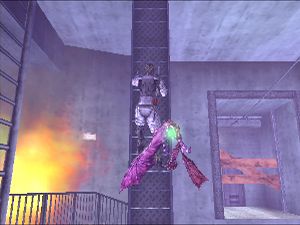Haven’t I seen you somewhere before?
Mix a little bit of Dino Crisis
with Metal Gear Solid and
simmer until luke-warm, add a serving of Onimusha
with a slice of Silent Hill,
stir briskly, set in warm oven for one hour and serve with a garnish of your
favorite grade-B variety survival-horror movies. Don’t forget to…
-
One weapon is all you'll need
-
Lots of enemies to dispatch
-
Nice weather effects
-
Very familiar
-
Derivative story
-
Twitchy control
-
Camera designed by the enemy











